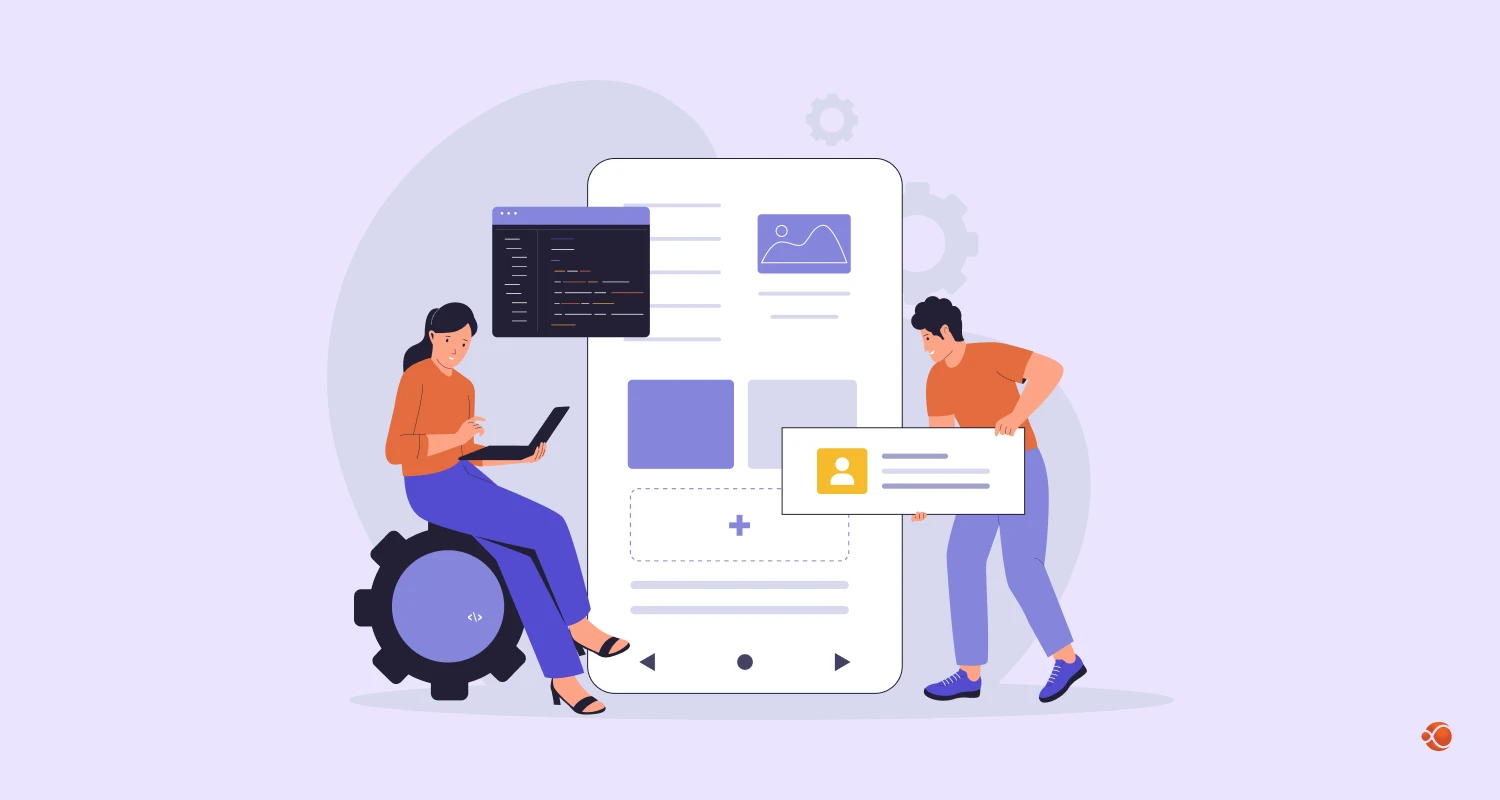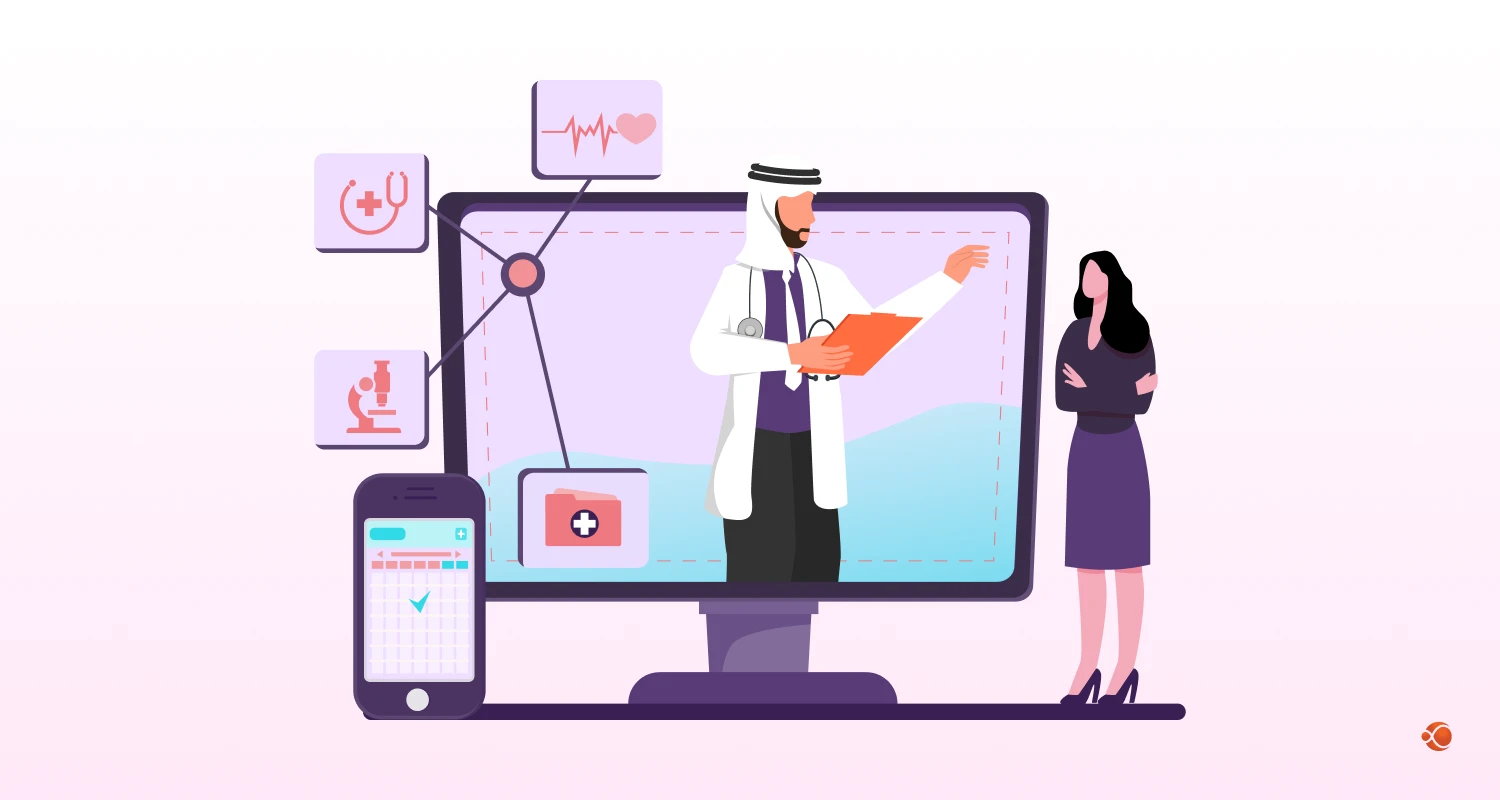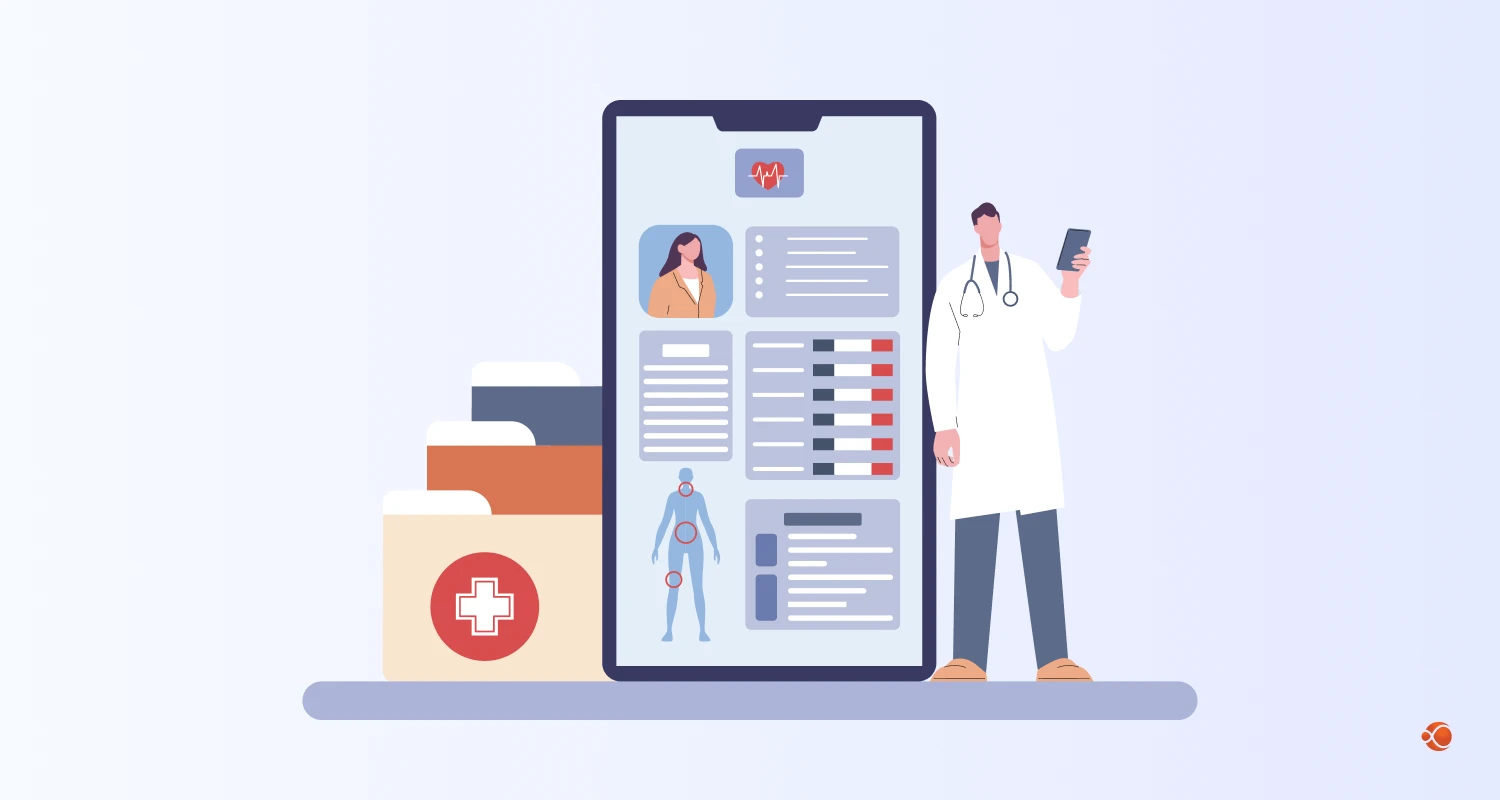The digital transformation of the insurance industry has reached an important moment. Traditional car insurance processes, which were once dominated by lengthy paperwork and phone calls, are quickly shifting towards mobile-first solutions. Car insurance app development has been a game-changing opportunity for insurers and entrepreneurs.
Today’s consumers demand instant access to their insurance information. They want to file claims with a few taps, compare policies in real time, and manage their coverage without waiting on hold. This drastic shift in consumer behavior has created a massive market opportunity. The global vehicle insurance market size accounted for USD 910.51 billion in 2024 and is expected to exceed around USD 1,796.61 billion by 2034, growing at a CAGR of 7.03% from 2025 to 2034.
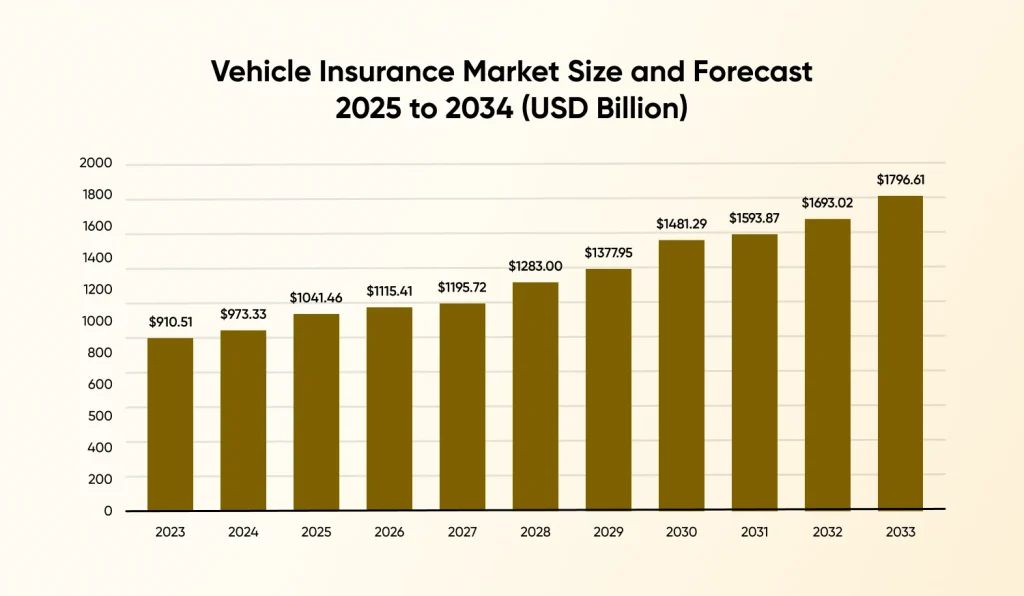
The pandemic accelerated this digital adoption significantly. Remote work and social distancing measures pushed even the most traditional insurance customers toward digital solutions. Now, insurance companies that fail to offer mobile experiences risk losing customers to more technical competitors.
Why Does Car Insurance App Development Matter?
The traditional car insurance industry faces unpredictable disruption. Legacy systems, limited customer interaction, and paperwork are no longer satisfying modern customer expectations. Car insurance app development addresses these industry challenges while creating new opportunities for customer engagement.
Key Benefits of a Car Insurance App
Enhanced Customer Experience
Modern drivers expect insurance services to match the convenience of their favorite apps. They want quick policy information, query handling, claim filling, and real-time updates on their requests. Mobile apps remove the frustration of waiting on hold or scheduling an appointment for simple tasks. Customers can manage their entire insurance relationship through intuitive interfaces customised to their specific needs.
Operational Efficiency for Insurer
Vehicle insurance software improves service quality and reduces operational costs. Automated processes handle routine tasks like premium calculation, policy renewal, and basic claim processing. This automation lets human agents focus on complex cases requiring personal attention. Digital document management removes physical storage needs and reduces processing time.
Data Driven Decision Making
Mobile apps generate valuable data streams that traditional insurance methods cannot capture. Telematics data reveals actual driving patterns, allowing insurers to assess risk more accurately than historical models based on demographics alone. Real-time data enables dynamic pricing models that reward all the safe drivers for their driving behaviours immediately.
Types of Car Insurance Apps
Understanding the different categories of car insurance software helps businesses identify their target market and development approach. Each type serves distinct user needs and business models.
| App Type | Key Features | Cost Estimation (Approx) |
| Customer-Facing Insurance Apps | Policy management, Claims filing, Premium payments, Account dashboard, Agent communication | $20,000–$300,000 |
| Agent and Broker Apps | Multi-carrier access, Quote comparison, Client management, Commission tracking, Lead generation | $30,000–$250,000 |
| Claims Processing Apps | Damage assessment, Photo uploads, Repair shop networks, Status tracking, and Settlement processing | $30,000–$300,000 |
| Telematics and Usage-Based Insurance Apps | Driving behavior monitoring, Real-time feedback, Premium calculations, Safety scoring, Route optimization | $50,000–$300,000+ |
| Comparison and Marketplace Apps | Multi-insurer quotes, Policy comparison, Rate calculations, Educational content, Decision tools | $70,000-$250,000+ |
Customer-Facing Insurance Apps
Customers use them to file claims, purchase policies, manage their accounts, and track claim status. Major insurers like Progressive and State Farm have invested heavily in these platforms. These apps usually include features like premium calculations, policy management, and direct communication channels with agents.
Agent and Broker Apps
Insurance professionals need special tools to serve their clients effectively. Agent apps give access to multiple insurance carriers, client management systems, and quote comparison tools. Such applications streamline the sales process and help agents provide better customer service. They integrate with communication tracking tools and customer relationship management systems.
Claims Processing Apps
Claims management applications focus on the post-accident experience. These apps guide the users through the claims process, connect them with preferred repair shops, and give them real-time updates on claim status. Some advanced versions use AI to assess damage through photos and expedite simple claims.
Telematics and Usage-Based Insurance Apps
These kinds of innovative applications monitor driving behavior to calculate personalized premiums. They track factors like braking speed, time of day, mileage and speed. The data helps insurers usage based insurance policies that reward safe drivers with lower rates. This app for auto insurance category represents the future of tailored coverage.
Comparison and Marketplace Apps
Third-party platforms that allow users to compare policies from different insurers fall into this category. These apps aggregate the quotes from many providers, helping consumers find the right rates and coverage options. They generate revenue through referral fees and lead generation for insurance companies.

Car Insurance Mobile App Features
Creating a successful vehicle insurance software requires careful consideration of both basic functionality and advanced features that differentiate your app from competitors.
User Registration and Profile Management
This feature forms the foundation of any insurance app. The users need to secure account creation with multiple authentication options, including biometric verification and social media logins. Profile management should allow users to update personal information, manage multiple vehicles, and add family members smoothly.
Policy Management Features
The feature allows users to view current policies, coverage details, and renewal dates. This will provide a clear explanation of coverage types, limits, and deductibles. Users should be able to add or remove vehicles, modify coverage and update policy information without calling customer service. Modern insurance app development practices ensure these features integrate seamlessly with existing insurance systems.
Quote Generation and Comparison
The functionality allows users to receive instant quotes based on their specific needs. The system should consider factors such as driving history, vehicle type, location, and desired coverage levels. Advanced algorithms should provide accurate pricing while remaining user-friendly.
Claims Management Functionality
Claim management is the most important aspect of insurance service. Users should be able to track claims progress and report accidents, upload photos, and communicate with adjusters directly through the app. Integration with repair networks and rental car services adds significant value.
Insurance App Payment Gateway Integration
Payment gateway integration supports multiple payment methods and automated billing. Users would be able to pay premiums, receive digital receipts, and set up automatic payments. Integration with famous payment platforms increases users’ convenience and reduces payment friction.
Revenue Model of Car Insurance App
Building a sustainable revenue model is important for long-term success in automobile insurance software development. Different approaches work better for different target markets and business models.
Commission-Based Earnings
Apps that connect users with insurance providers earn commissions on policy sales.This performance-based model aligns with the app’s success with actual business results. Insurance commission rates range from 5% to 15% of annual premiums, depending on providers agreement and insurance type. Professional insurance APIs enable seamless integration with multiple carriers to maximize commission opportunities.
Subscription-Based Revenue
Annual subscription fees or monthly fees provide predictable revenue streams. This model works well for apps that give premium features like advanced analytics, enhanced customer support, and additional coverage options. Tiered subscription levels allow users to choose features that match their budgets and needs.
Advertising and Partnerships
Strategic partnerships with automotive service providers build additional revenue opportunities. Apps can feature preferred repair shops, car dealerships, or automotive accessory providers. Native advertising that provides genuine value to users without compromising user experience.
Data Monetization
Encrypted user data and driving patterns have huge value for automotive businesses and insurance companies. This revenue stream requires strict privacy compliance and transparent user consent. Data insights help insurers improve the risk assessment and develop new products.
Transaction Fees
Keeping the base app free while charging a small fee for specific transactions generates revenue. Examples include fees for expedited claim processing, additional documentation services, or premium policy changes. This model requires careful balance to avoid alienating users with excessive charges.
Steps to Develop a Car Insurance App
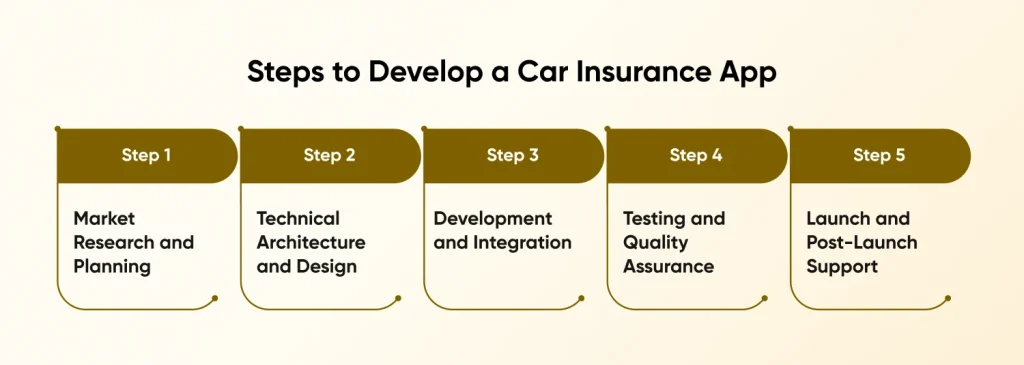
Developing a successful car insurance app requires systematic planning and execution. Each step builds upon previous work to create a comprehensive platform.
Step 1: Market Research and Planning
Complete market analysis identifies weaknesses, target audiences, market gaps and competitor strengths. This research informs about the feature prioritization and business model selection. Regulatory compliance requirements vary by location and must be thoroughly understood before development starts.
User persona development builds detailed profiles of target customers. Understanding their pain points, preferences, and technology comfort levels guides design and feature decisions. Surveys, focus groups, and competitor analysis give valuable information about user expectations.
Step 2: Technical Architecture and Design
System architecture planning establishes the technical foundation for scalability and security. Cloud-based solutions offer cost-effectiveness and flexibility for growing user bases. Database design must accommodate difficult insurance data while maintaining fast query performance.
User experience design focuses on simple navigation and intuitiveness. Insurance processes can be complex, but the app interface should simplify these interactions. Wireframing and prototyping help in identifying usability issues before development begins.
Step 3: Development and Integration
Cross-platform development frameworks like Flutter and React Native reduce development costs while maintaining native performance. API integration with insurance carriers, third-party services, and payment processors requires careful planning and testing. On-demand app development approaches allow for rapid prototyping and user feedback integration throughout the development cycle.
Security implementation protects sensitive financial information and personal data. Encryption, secure authentication and regular security audits makes sure compliance with regulations and industry standards. Data backup and disaster recovery plans protect against system failures.
Step 4: Testing and Quality Assurance
Complete testing covers performance, functionality, security, and user experience. Automated testing frameworks speed up the testing process while ensuring consistent quality. Load testing verifies that the system can handle peak usage periods without performance degradation.
Beta testing with real users provides valuable feedback on pain points and actual usage patterns. This feedback drives final refinements before public launch. Continuous testing throughout development catches issues early when they’re less expensive to fix.
Step 5: Launch and Post-Launch Support
App store optimization improves visibility and download rates. Detailed description, positive reviews, and compelling screenshots drive organic growth. Marketing campaigns should target specific user segments with tailored messaging.
Ongoing maintenance and updates keep the app current with changing regulations, operating system updates, and user feedback. Regular updates demonstrate a commitment to user satisfaction and platform improvement. Analytics tracking provides information on feature adoption and user behaviour.
Technological Trends in Car Insurance App Development
The vehicle insurance app trends landscape continues evolving rapidly as new technologies emerge and user expectations change. Staying current with these trends ensures long-term competitiveness.
Artificial Intelligence and Machine Learning
AI-powered risk assessment analyzes huge amounts of data to predict claim likelihood and calculate personalized premiums. Machine learning algorithms increase accuracy over time as they process more data. Natural language processing allows more sophisticated chatbot interactions and automated document processing.
Computer vision technology automates damage assessment through smartphone photos. Advanced algorithms can find vehicle damage, expedite simple claims and estimate repair costs without human intervention. This technology reduces claim processing time and costs.
Blockchain Technology
Blockchain creates immutable records of claims, policy changes, and payments. This transparency reduces fraud and disputes while building a trust relationship between insurers and customers. Smart contracts automate policy enforcement and claim payments based on predetermined conditions.
Cryptocurrency payment options appeal to tech-friendly customers and those who want to reduce transaction costs. Blockchain-based identity verification streamlines the onboarding process while maintaining security standards.
Augmented Reality Applications
Augmented reality technology guides users through accident documentation processes, making sure they capture all necessary information for claims processing. Virtual damage assessment allows remote adjusters to evaluate claims without physical inspections. Interactive policy education helps users understand coverage options through visual demonstrations.
Maintenance reminders and vehicle care instructions delivered through AR enhanced customer value and potentially reduced claims frequency. These features create additional touchpoints that strengthen customer relationships.
Internet of Things Integration
Connected vehicle data gives real-time information on driving behavior, accident circumstances, and vehicle conditions. Integration with smart home devices allows complete risk profiles that consider lifestyle factors beyond just driving habits. IoT sensors can automatically detect accidents and initiate emergency response procedures. Insurance software development company providers specialize in creating sophisticated IoT integrations that enhance risk assessment capabilities.
Wearable device integration adds an additional layer of data for comprehensive risk assessment. Health and fitness data can inform life insurance cross-selling opportunities and encourage healthier lifestyle choices through premium discounts.
Costs of Developing a Car Insurance App
Understanding the financial investment required for the car insurance app development process helps businesses plan budgets and set realistic expectations. Costs vary based on complexity, features, and development approach.
Development Phase Costs
The basic app development typically ranges from $50000 to $150000 for a minimum viable product with important features. This includes user registration, basic claims filing, policy management, and payment processing. Development time usually spans 4-6 months with a small team.
Advanced features like AI-powered chatbots, telematics integration, and real-time damage assessment increase costs to $200000-$500000. These sophisticated applications require specialized expertise and longer development timelines of 8-12 months.
Enterprise-level solutions with complete integration, custom features, and advanced analytics can exceed $1 million in development costs. These platforms typically serve as large insurance companies with complex existing systems and high security requirements.
Ongoing Operational Costs
Cloud hosting and infrastructure costs scale with user growth and feature complexity. Basic hosting might cost $500-$2000 monthly, while high-traffic applications require more infrastructure, costing $5000-$20000 monthly. Content delivery networks and database optimization add to these expenses.
Third-party service integration for mapping, notification, payment processing, and analytics typically costs $1000-$5000 monthly, depending on usage volumes. These services provide crucial functionality but require ongoing subscription fees.
Compliance and security measures require continuous investment. Regular security audits, penetration testing, and compliance certifications cost $10000-$50000 annually. Data protection and privacy compliance add additional ongoing expenses.
Maintenance and Updates
Post-launch maintenance typically 15-20% of initial development costs annually. This includes operating system updates, bug fixes, security patches, and minor feature enhancements. Regular updates maintain user satisfaction and platform compatibility.
Major feature additions and platform expansions require additional development investment. Annual budget increase from $50000-$200000 keeps apps competitive and responsive to changing user needs.
Marketing and user acquisition costs vary widely based on target markets and competition levels. Digital marketing campaigns, partnership development, and app store optimization require ongoing investment to drive user growth.
| Cost Category(Approx) | Basic App (USD) | Advanced App (USD) | Enterprise Solution (USD) |
| Development Phase Costs | $50,000 – $150,000 | $200,000 – $500,000 | $1,000,000+ |
| Ongoing Operational Costs (Annual) | $25,000 – $75,000 | $75,000 – $200,000 | $300,000 – $800,000 |
| Maintenance and Updates (Annual) | $15,000 – $50,000 | $50,000 – $150,000 | $200,000 – $500,000 |
Why Choose CMARIX for Car Insurance App Development?
Selecting the right development partner is crucial for the success of your car insurance app development project. CMARIX brings specialized expertise and proven methodologies to deliver exceptional insurance applications that drive business growth.
1. Innovative Technology Integration
CMARIX stays ahead of industry trends by continuously investing in new technologies. Our mobile app development services incorporate telematics integration, real-time data processing, and cloud-native architectures that scale with your business growth. We implement APIs that connect with existing insurance systems, third-party service providers, and payment gateways.
2. Domain Expertise with Customization
CMARIX excels in creating tailored car insurance apps that align with your unique business needs. Our deep understanding of the insurance domain ensures your app is both user-friendly and compliant with industry standards. We recognize that every insurance company has different requirements, target audiences, and regulatory obligations.
3. Comprehensive and Secure Solutions
Our comprehensive approach includes thorough testing protocols, performance optimization, and ongoing maintenance support. We ensure your application meets all regulatory requirements while delivering exceptional user experiences that drive customer satisfaction and retention. When you hire mobile app developers from CMARIX, you gain access to a full-service team committed to your project’s long-term success.
Final Words
The future of car insurance app development presents opportunities for forward-thinking businesses. Digital transformation in the insurance industry has moved beyond optional to essential. Companies that embrace mobile-first strategies will capture market share from traditional competitors still relying on outdated processes.
Partnering with an experienced car insurance development company speeds up the time-to-market while making sure quality and compliance. These specialists understand industry-specific requirements and can navigate complex regulatory environments effectively. The trends toward personalization, automation, and real-time service delivery will continue shaping the industry. Companies that invest in AI consulting services and advanced analytics will gain significant advantages in risk assessment and customer service delivery.
Frequently Asked Questions
How to Develop a Car Insurance App?
Developing a car insurance app involves five key phases: market research and planning, technical architecture design, development and integration, comprehensive testing, and launch with ongoing support. Start by defining the target audience and core features, then choose an appropriate technology stack and development methodology.
How Much Does It Cost to Build a Car Insurance App?
Development costs range from $50,000-$150,000 for basic apps to $200,000-$500,000 for advanced solutions with AI and telematics features. Enterprise-level applications can exceed $1 million, with additional annual operational costs of $25,000-$800,000 depending on complexity and user base.
How to Build a Car Insurance App Considering Data Safety?
Implement multi-layer security, including end-to-end encryption, secure authentication protocols, GDPR compliance measures, and regular security audits. Use secure cloud infrastructure, conduct penetration testing, and establish strict data access controls to protect sensitive customer information throughout the application lifecycle.
What Advanced Features Can Enhance the App?
Advanced features include AI-powered chatbots for telematics integration for usage-based insurance, blockchain for secure transactions, automated damage assessment, and predictive analytics for personalised policy recommendations. Such features improve user experience and operational efficiency.





